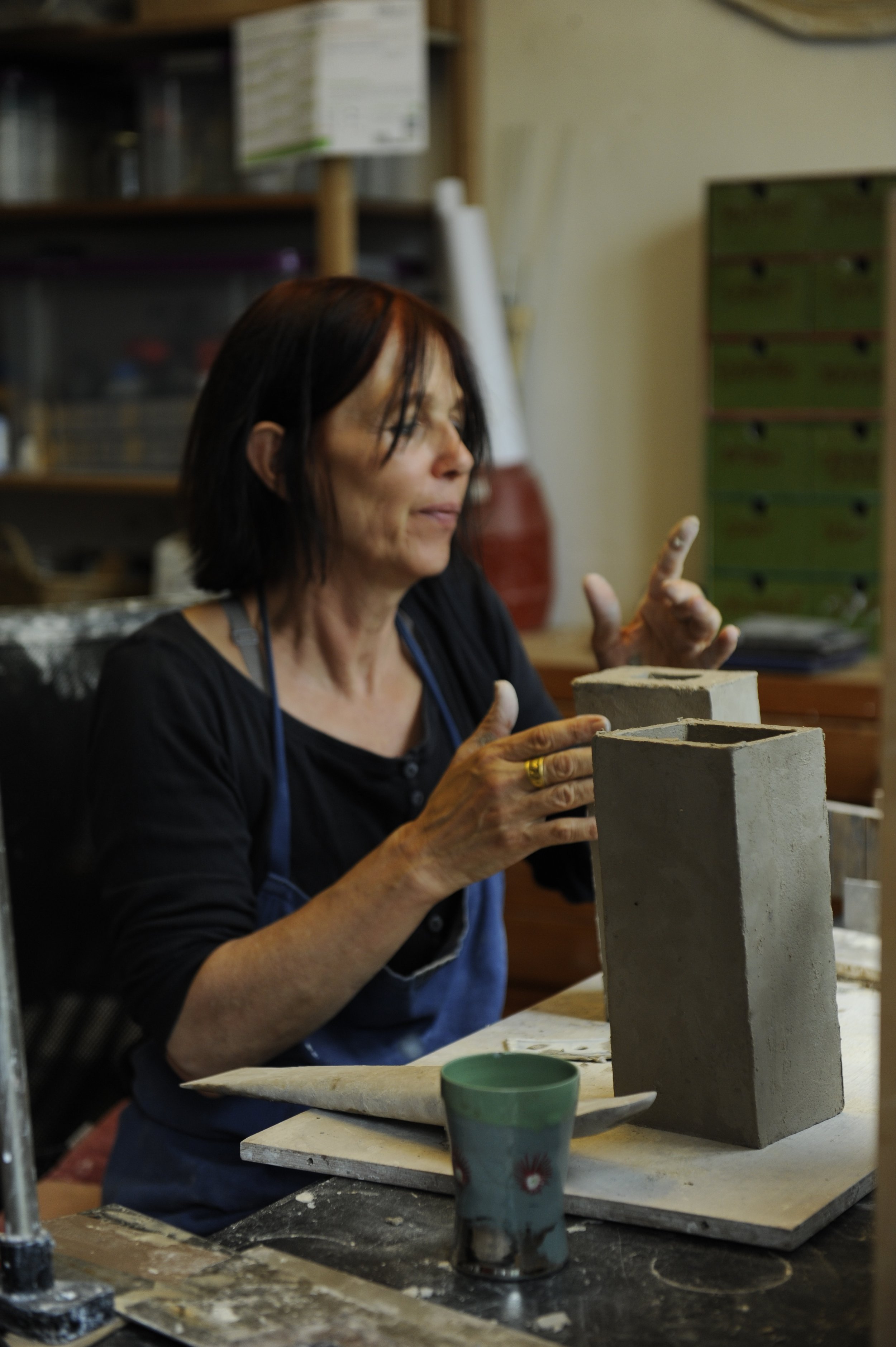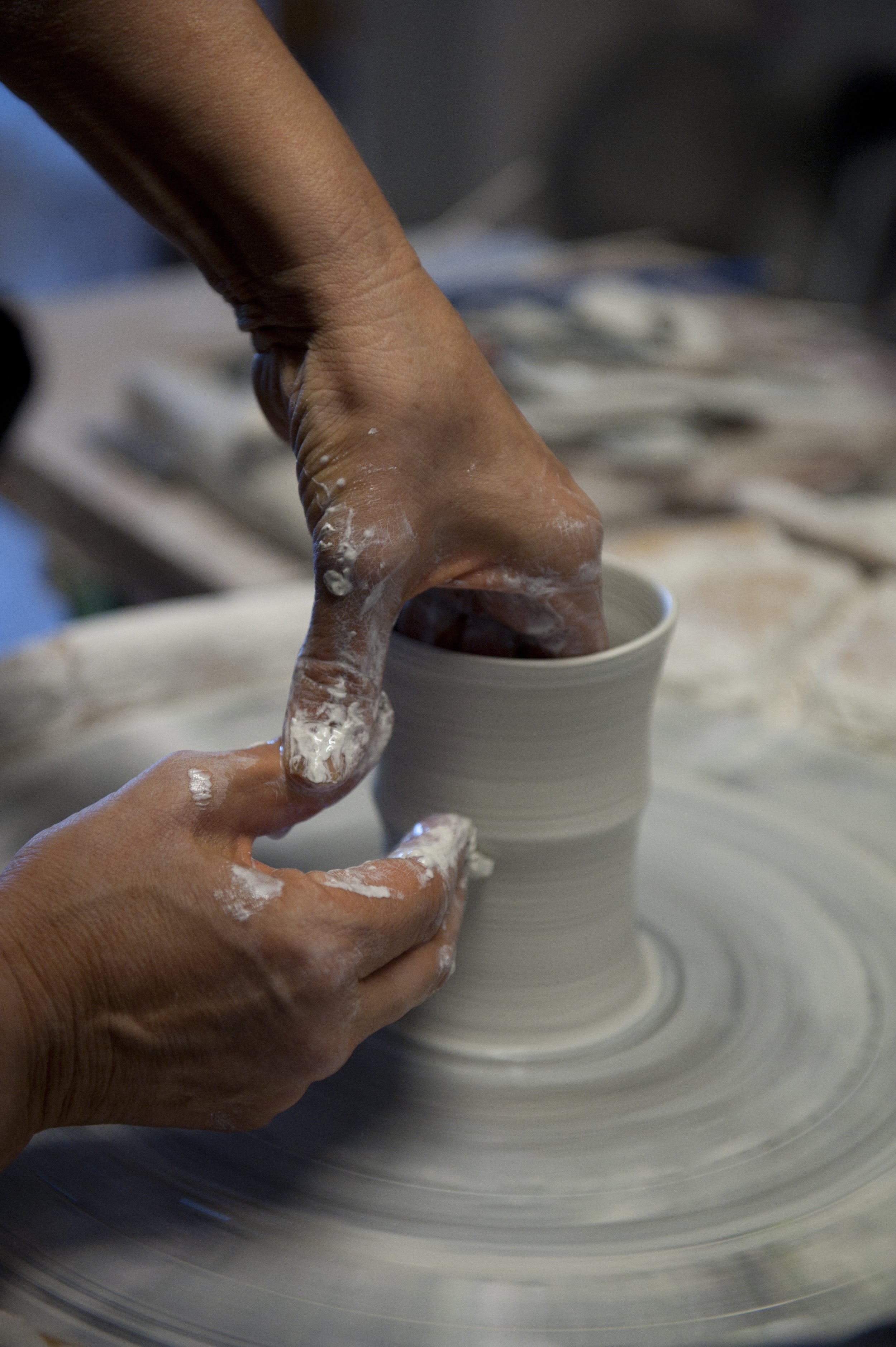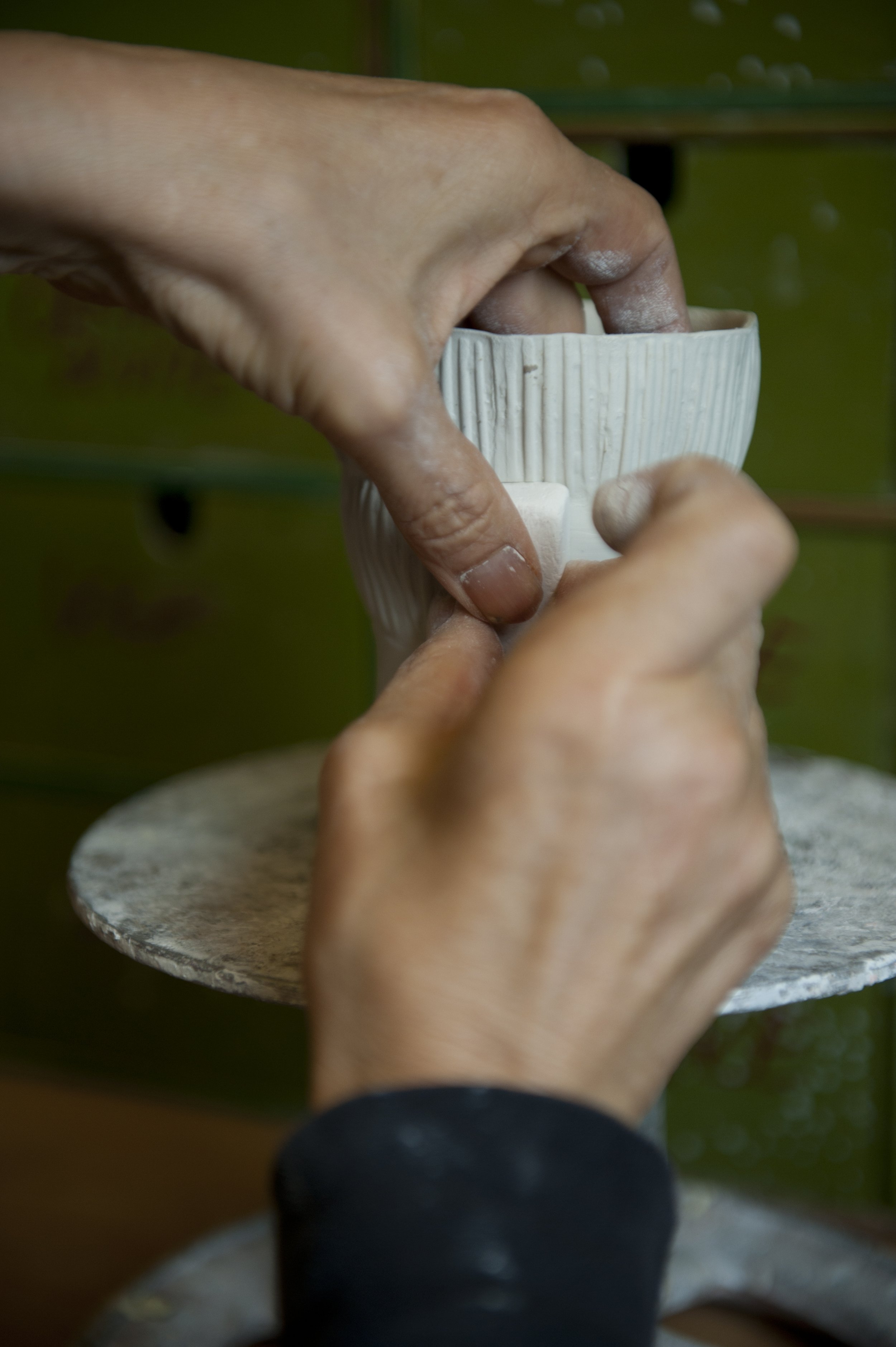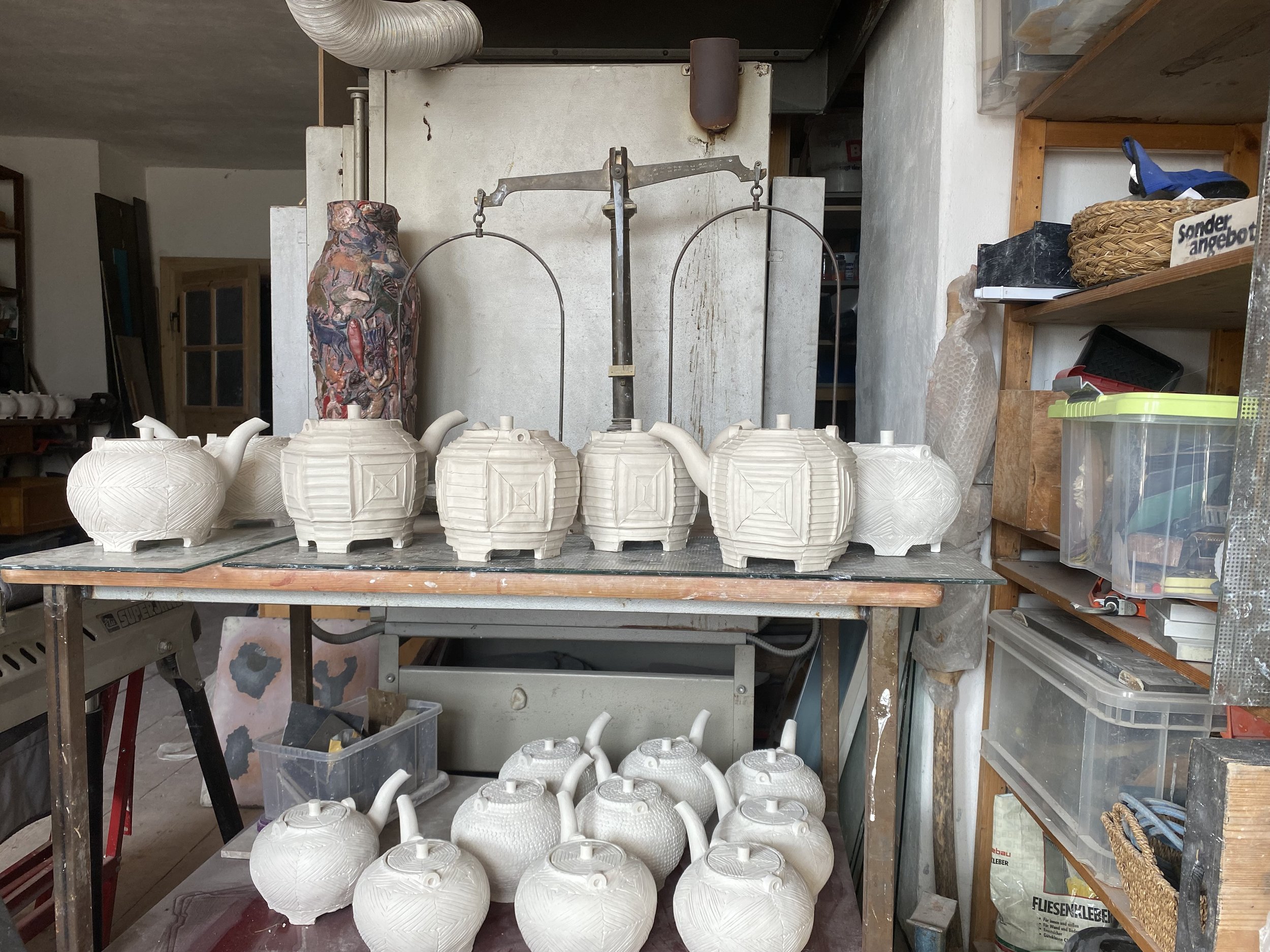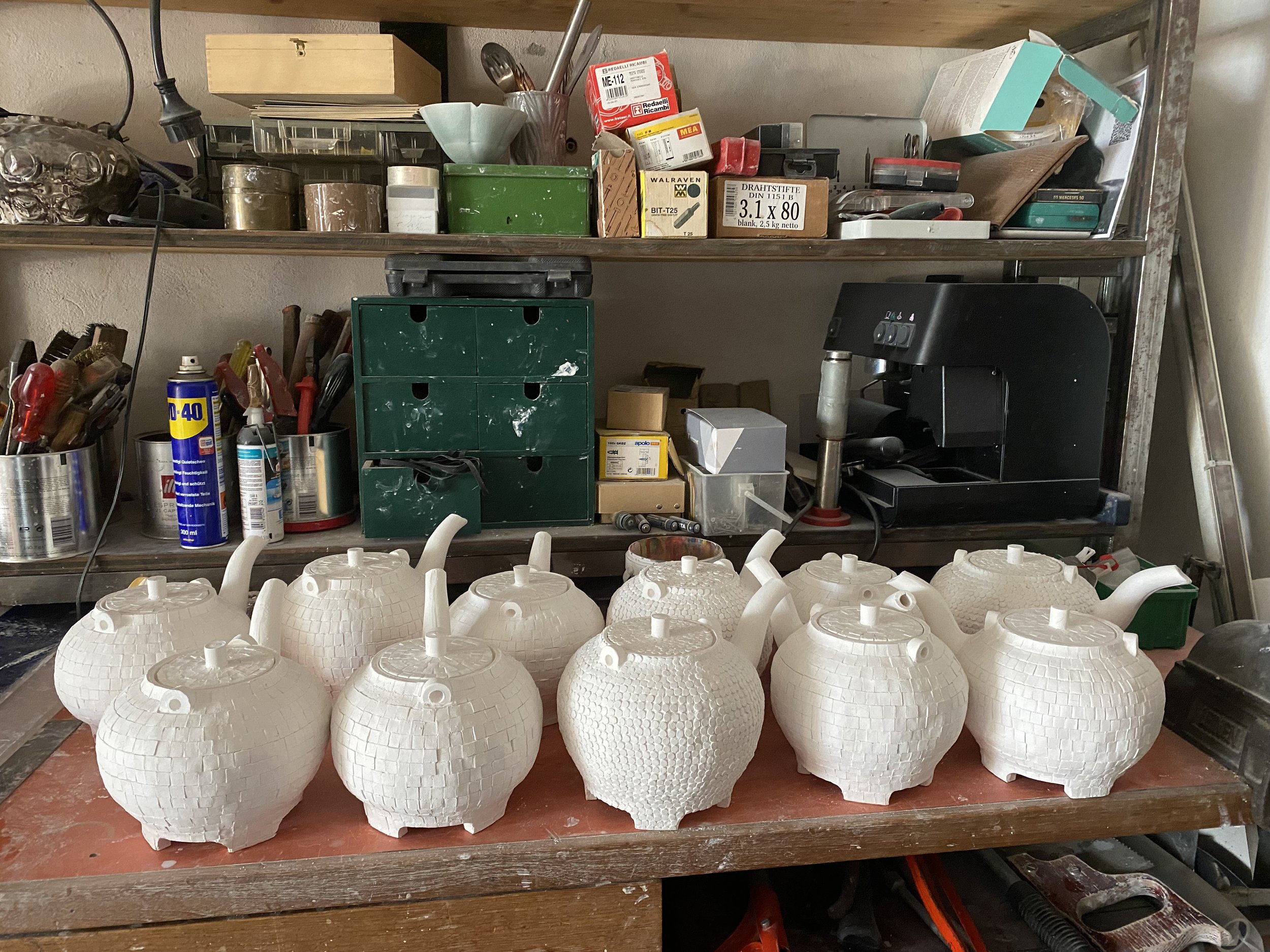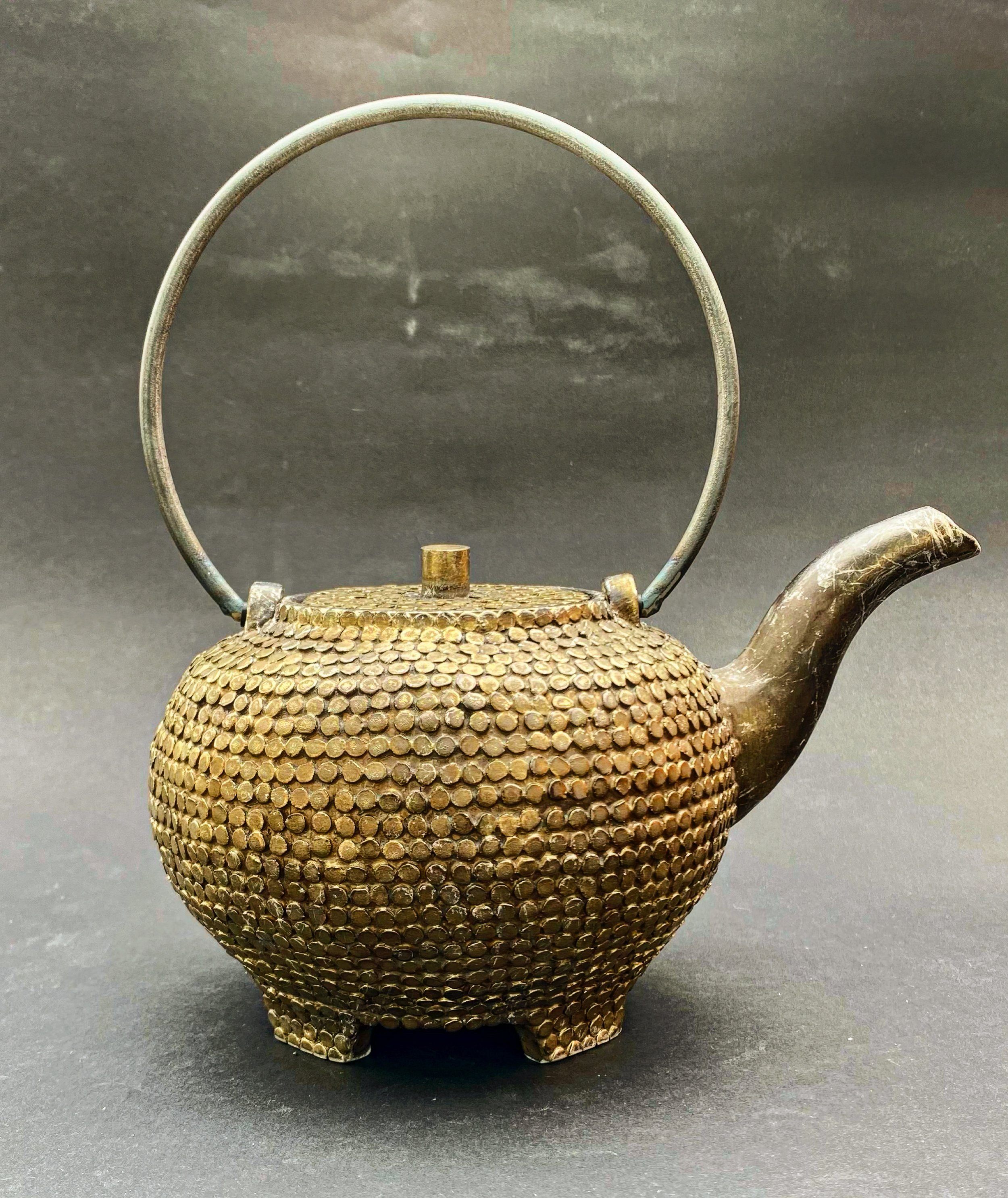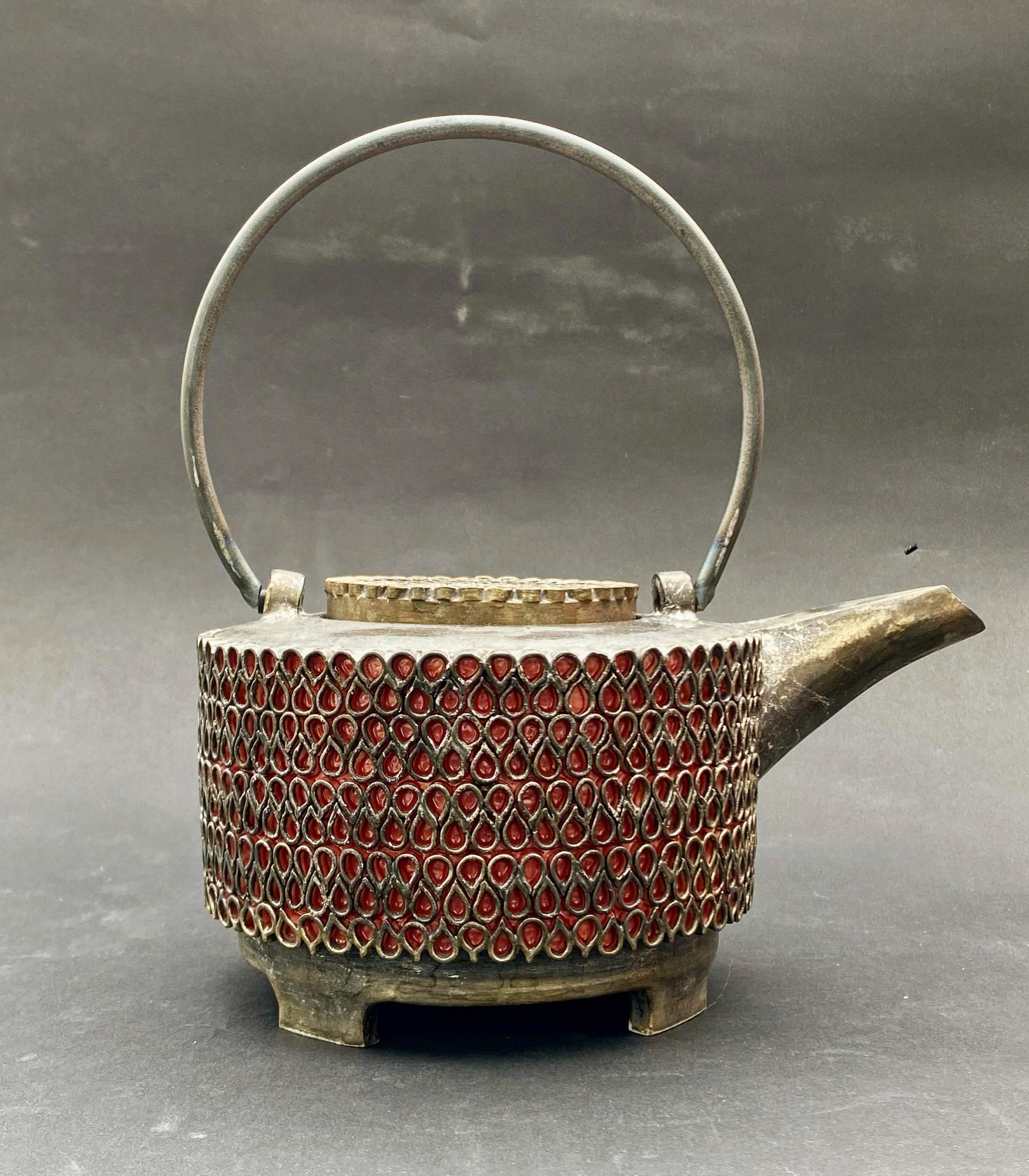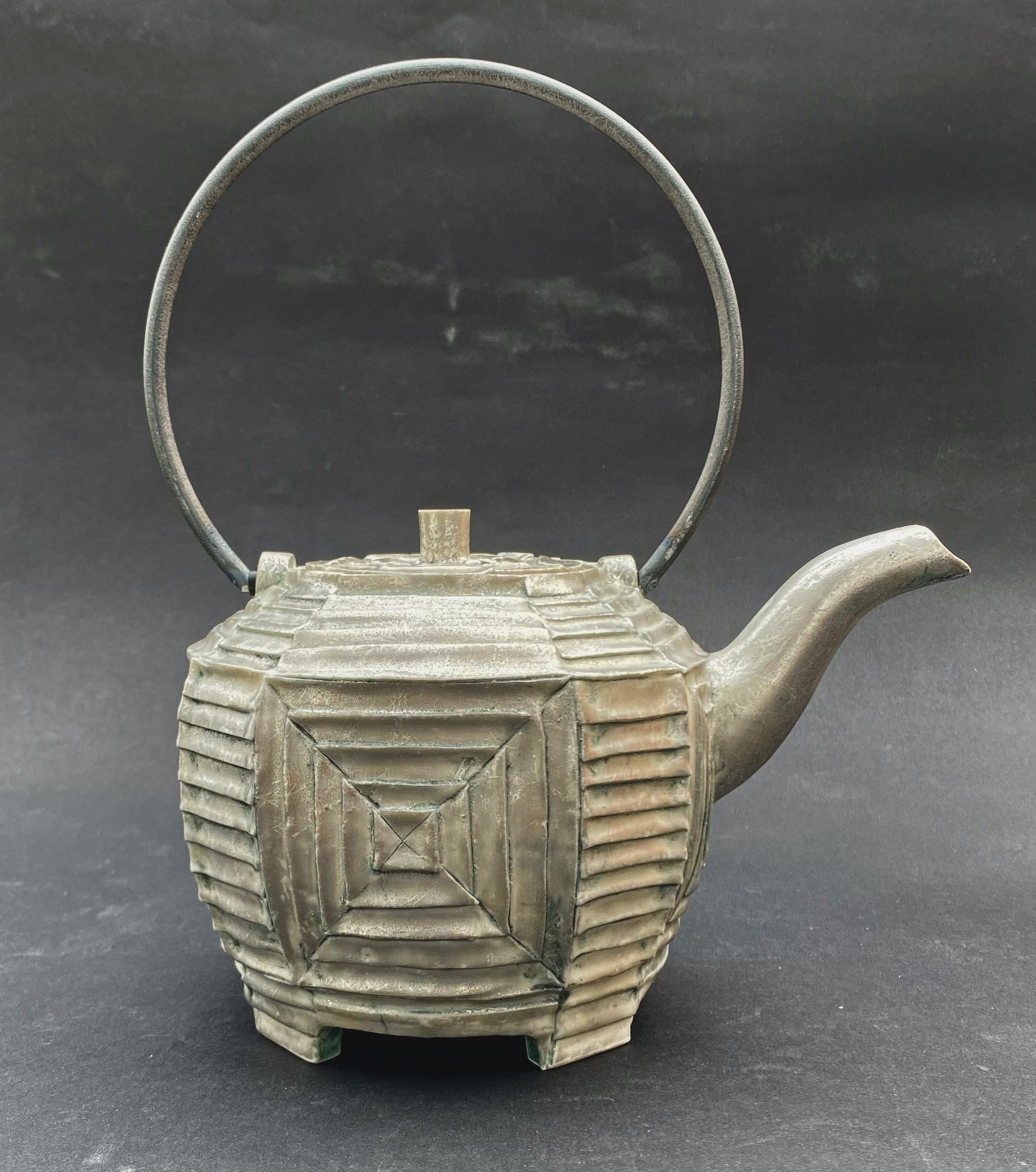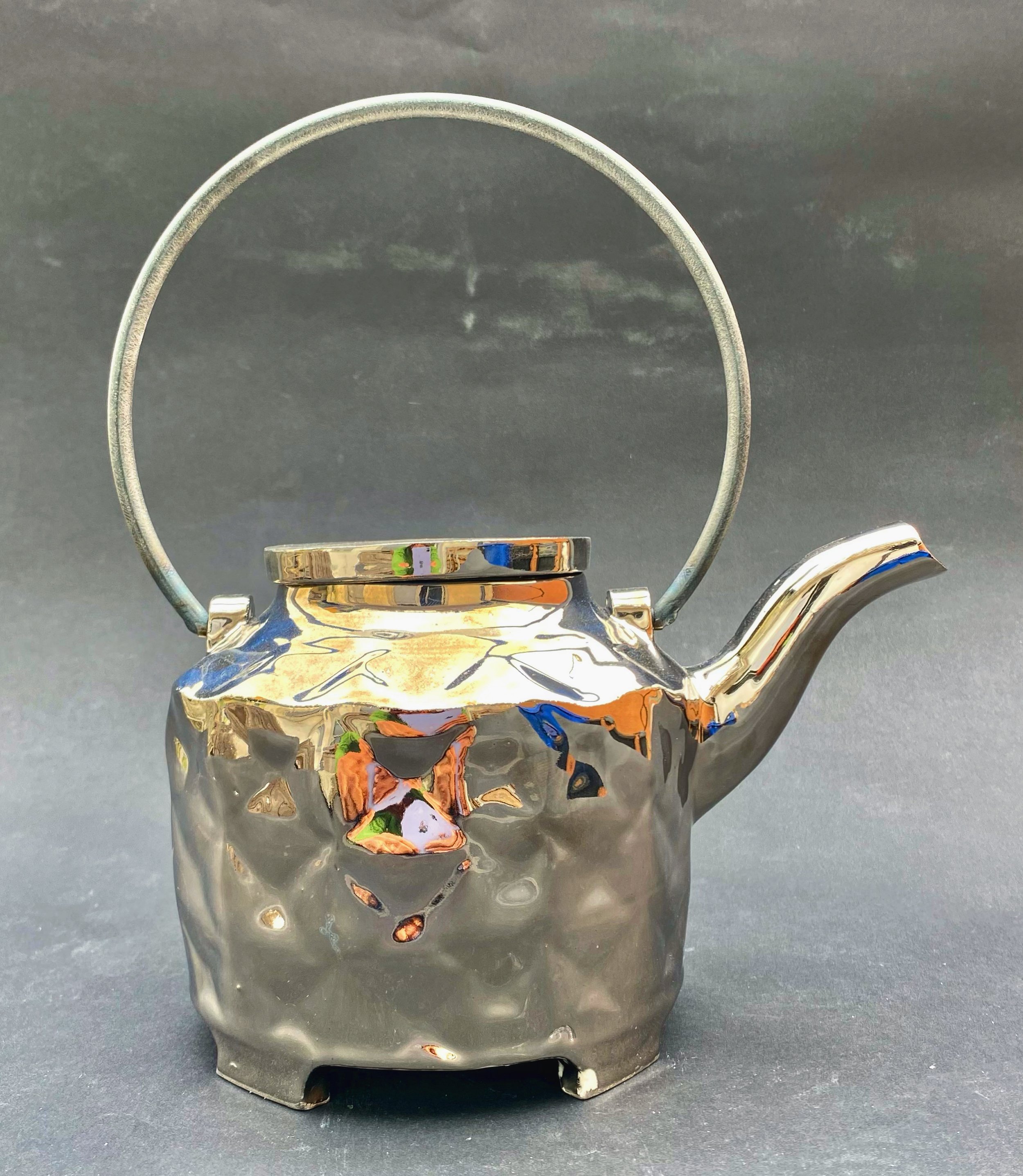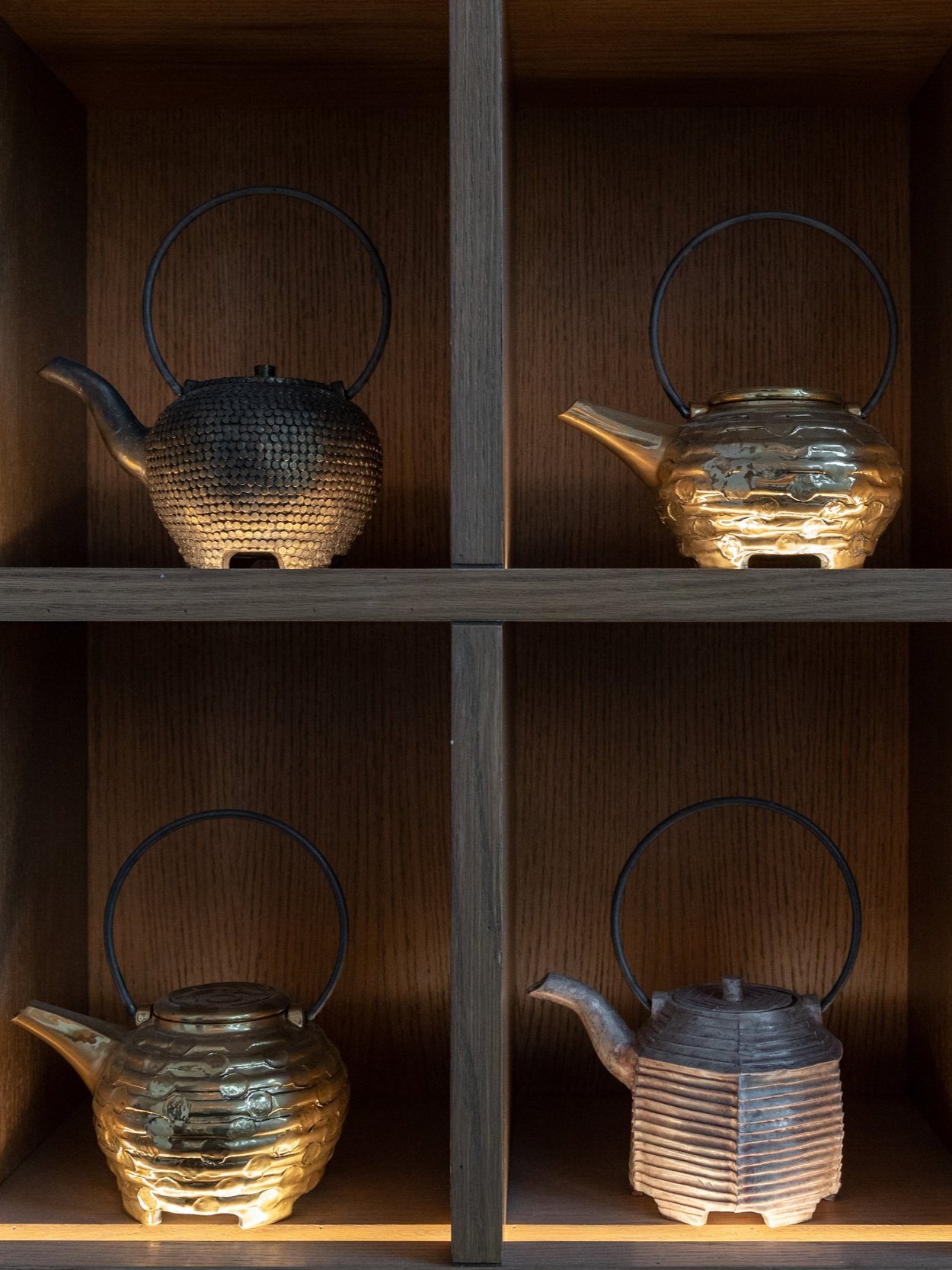Studio Visit | Kati Jünger
Master artisan Kati Jünger dedicates her work to the search of new materials to combine with ceramics without losing the functionality of the vessel. Embedded in the aesthetics of ancient ceramics, Jünger attempts to capture the transience of life, and the power of tradition, through replication and rearrangement. ArtLink approached Kati for a special commission of 64 teapots for the Katara Towers Fairmont hotel’s tea lounge. We went behind the scenes with Kati to discuss her work and this project.
Journey to Ceramics
When asked about her journey into ceramics, Kati told us, “I grew up in a family of artists; the sense of aesthetics was fed to me in my cradle. My father was a goldsmith who made jewelry. I grew up with art and I never asked myself what I should do when I grow up. I started making ceramics when I was 16 and that was it.”
Kati did her ceramics apprenticeship with Celine von Eichborn in the early 1980s. She then studied at Gerrit Rietveld Academy, Amsterdam, and the University of Applied Arts, Vienna. Now a master artisan, Kati is the recipient of many prizes and awards, among them the prize for creative craftsmanship in Berlin, the Bavarian State Prize, and the Appoline Prize Grassi Fair in Leipzig. Her works can be found in the collections of the State Museum for Applied Arts, Munich, the Museum of Arts and Crafts, Hamburg, the Kunstgewerbemuseum Berlin, and the Grassi Museum Leipzig.
Creative Process from Concept to Finish
Kati makes teapots and vases. She says that she realized very quickly that the process of turning a piece from start to finish was just too quick and didn’t satisfy her; she needed something where she could sit and work on a piece for longer, which led her to begin incorporating ornamentation into her works.
Kati starts her day by going outside with her dog to the river or forest, looking for new motifs and inspiration. “The beauty, grandeur and tranquility in nature inspires me and influences the directions I take with my works.”
She buys her clay at her local village store and kneads it until it warms. When starting a piece, she first considers how to shape the teapot or vase. She then turns the workpiece on the potter’s wheel or builds the vessel from clay plates. While she works, her imagination determines her further process. Inspired by the aesthetics of antique Asian pottery together with her accumulated expertise from decades of experience working with ceramics creating endless variations with the material, she creates the form and surface design.
Kati also has dedicated her work to search for new materials to combine with ceramics without losing the functionality of the vessel, saying “it is also interesting for me to take away the ceramic.” She has been exploring adding silver and metals to the surfaces of her pieces. As she comes from a family of goldsmiths, Kati says that she has always been more interested in metallic surfaces than ceramic ones. “Changing a ceramic work so that it actually looks metallic has always been fun for me.”
About the ArtLink Commission
“When we started, I was very nervous because I never had made a big order like this. The project was an exciting challenge for me.”
Kati works on one piece at a time, taking care to give attention to the smallest details of each item. This commission, however, required a faster production in order to create 64 teapots within the three months she was given to complete the project. Kati asked around her village whether anyone would be willing to come help her. Kati ended up enlisting the help of three close friends, all local women from her village, to work on the ornaments. Together, they transformed her workshop into a small manufactory for this project.
The Wall of Teapots
The installation of teapots at the Fairmont Doha tea lounge is reflective of the Qatari culture of hospitality and the communally shared tea ceremony. Qatari culture is renowned for its warm hospitality, where guests are welcomed with open arms and treated with utmost respect and generosity. The tea ceremony serves as a centerpiece of social gatherings, fostering connections and conversations among friends and strangers alike, fitting for a cosmopolitan hotel frequented by travelers from across the globe.
Kati’s attempt to capture the transience of life and the power of tradition, through replication and rearrangement shines through in this installation for the tea lounge: The arts of infusion and ceramics stand in harmony, displayed throughout a shelving system custom-made for the works.


